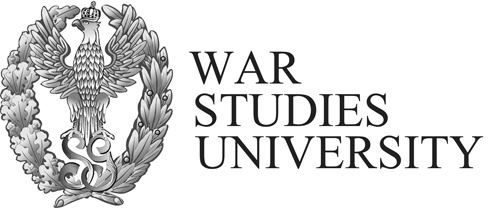Online first
Current issue
All issues
About
Aims and scope
Peer review process
Publication policy and ethics & malpractice statement
Editorial Board
Reviewers
Publisher
Guide for authors
Call for papers
Book Reviews
Special Issues Archive
New and emerging technologies in defence education, training and governance
On some contemporary global security risks and challenges
1
General Staff of the Slovak Armed Forces, Bratislava, Slovakia
2
Armed Forces Academy of General M. R. Štefánik, Liptovský Mikuláš, Slovakia
3
Ministry of Defence, Bratislava, Slovakia
Publication date: 2014-09-30
Security and Defence Quarterly 2014;4(3):34-49
KEYWORDS
securityriskschallengesterrorismnational identitypluralismenvironmentresource scarcitydemography and migration
ABSTRACT
As the new millennium starts to unfold, we see before us an area of security that has been
radically reshaped since the end of the cold war and the end of the bipolar division of the
world. Still more and more deepening globalisation brings not only a lot of positives, but
also a lot of negatives appearing mainly in the form of new asymmetric security threats
or risks, so we understand that a real effort will now be required to reappraise the 21st
century. Simultaneously, it is clear that, if we want to stabilize security environment, we
must look beyond our traditional military philosophy and deal very seriously with new
global security risks and challenges.
REFERENCES (11)
1.
BARTOS, J. O. – WEHR, P. 2002. Using Conflict Theory. Cambridge: Cambridge University Press, 2002. 219 p. ISBN 978-0-52179-116-8. Global Economic Symposium, 2014. Identifying and Preventing Future Security Threats. Available at internet: http://www.global-economic-sym....
2.
IVANčíK, R. 2011. National and International Security in a Time of Globalization and Financial Crisis. In Science and Military, 2011, Vol. 6, No. 1, pp. 5-12. ISSN 1336-8885.
3.
IVANčíK, R. 2013. Military Aspects of Asymmetry in International Security. In Politické vedy, Vol. 16, No. 3, pp. 6-37. ISSN 1335-2741.
4.
JURčáK, V. 2013. Asymmetric threats in security environment of 21stCentury. In Security Forum 2013: Proceedings from 7thInternational Scientific Conference. Banská Bystrica: Faculty of political science and international relations, pp. 614-623. ISBN 978-80-557-0497-5.
5.
KAzANSKý, R. 2011. Security policy – Theory of Conflicts. Banská Bystrica: Faculty of Political Sciences and International Relations of MBU, 2011. 115 p. ISBN 978-80-557-0250-6.
6.
KAzANSKý, R. 2013. Contemporary Problems in Research of International Conflicts and Crisis and Their Solutions. Banská Bystrica: Publishing House – Belianum, 2013. 215 p. ISBN 978-80-557-0573-6.
7.
LASICOVá, J. – UšIAK, J. 2012. Security as a category. Bratislava: Veda – SAV Publishing House, 2012. 264 pp. ISBN 978-80-224-1284-1.
8.
NEčAS, P. – OLEJNíK, F. 2007. Wanted More Security: Towards A Better World. Košice: Faculty of Aeronautics of the Technical University, 2007. 138 p. ISBN 978-80-8073-762-7. šIMáK, L. – NOVáK, L. 2012. Security Environment and Protection of Critical Infrastructure in the Slovak Republic. In Crisis Management Days: Proceedings from 5thInternational Conference, 24 and 25 May 2012, Velika Gorica, Croatia,pp. 373-388. ISBN 978-953-7716-31-8.
9.
UšIAK, J. 2011. Theoretical Definition of Security from Perspectives of Non-military Aspects. In Research of Non-military Aspects of Security. Banská Bystrica: Fakulta politických vied a medzinárodných vzťahov UMB, 2011, pp. 8-33. ISBN 978-80-557-0290-2.
10.
UšIAK, J. – NEčAS, P. 2012. Is the State still Main Actor in Security Agenda? In Strategies – The Complex and Dynamic Nature of the Security Environment: Proceedings from 21stInternational Scientific Conference. Bucharest: Centre for Defence and Security Strategic Studies of the National Defence University, 2012, pp. 63-70. ISSN 2285-8318.
11.
World Meters. 2014. Current World population. Available at internet: http://www.worldometers.info/
CITATIONS (2):
1.
A Longitudinal Analysis of the Creation of Environmental Identity and Attitudes towards Energy Sustainability Using the Framework of Identity Theory and Big Data Analysis
Dorota Domalewska
Energies
Dorota Domalewska
Energies
2.
Analysing Kenya’s Contemporary Peace and Security Issues and Challenges
Elly Musafiri, Elisa Mupenzi
Arabic Language, Literature & Culture
Elly Musafiri, Elisa Mupenzi
Arabic Language, Literature & Culture
Share
RELATED ARTICLE
We process personal data collected when visiting the website. The function of obtaining information about users and their behavior is carried out by voluntarily entered information in forms and saving cookies in end devices. Data, including cookies, are used to provide services, improve the user experience and to analyze the traffic in accordance with the Privacy policy. Data are also collected and processed by Google Analytics tool (more).
You can change cookies settings in your browser. Restricted use of cookies in the browser configuration may affect some functionalities of the website.
You can change cookies settings in your browser. Restricted use of cookies in the browser configuration may affect some functionalities of the website.




